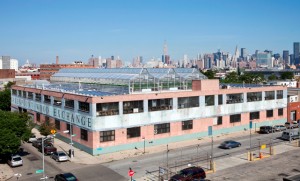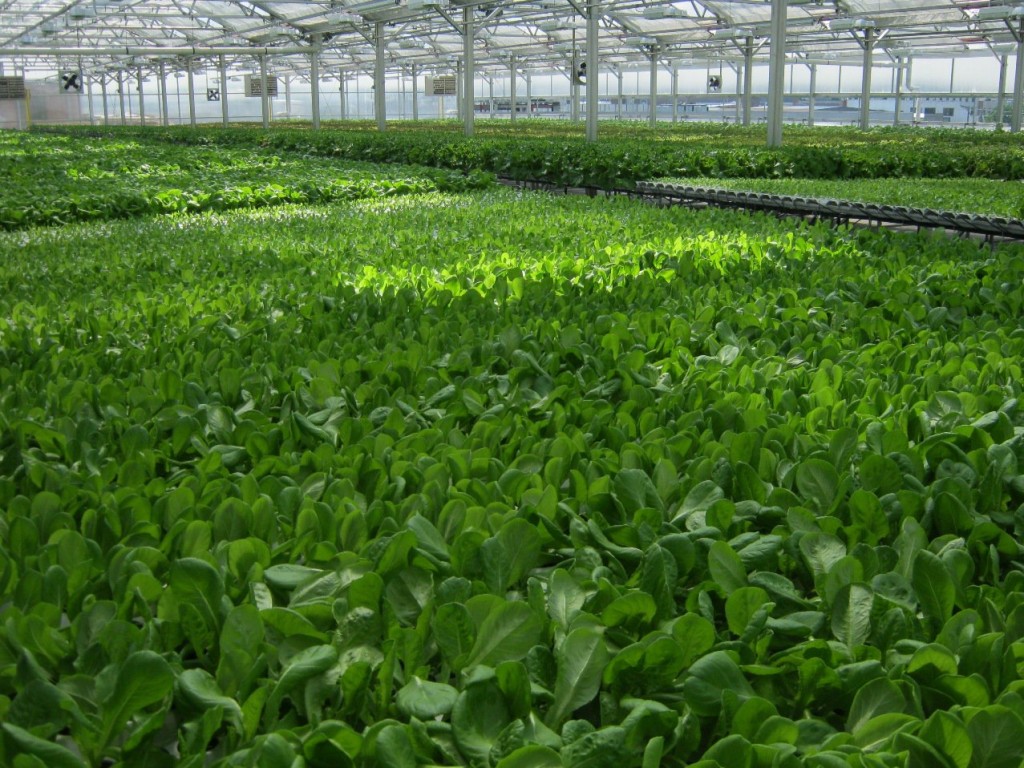Gotham Greens is a professional hydroponic farm sited on the roof of an old bowling alley. The operation is housed in a $2million greenhouse. The operation uses about 700 gallons of water a day, recycling much of it and using far less than most farms of this scale. Because Gotham Greens customers tend to be upscale New York dining establishments, great effort is made to maintain the produce’s quality. Hydroponics can result in produce with less flavor, but at Gotham Gardens, each plant is nourished with a unique “nutrient recipe” that includes sugar and essential oils which bring out the natural flavors of the plants.
What makes Gotham Greens different than most other urban hydroponic growing ventures is the capital invested in the operation. The farm is state-of-the-art, they are developing and testing nutrient recipes and growing materials as they go. The farm benefits the community in the usual ways – providing fresh and local food which cuts down on shipping distances, using energy-efficient systems to grow and providing work, but because this is a private organization on a rooftop out of the public eye, it does not contribute to the spatial quality of the urban environment.
SOURCE: http://gothamgreens.com/
EDITOR’S NOTE: This hydroponic system relies highly on technology but gives the farmers absolute control over growing conditions, nutrient input and climate to ensure the best quality vegetables for New York restaurants and large-scale markets (Wholefoods, in particular). As an urban typology, it optimizes the use of a pre-existing building and has the potential to conserve resources not only through the additional insulation values of the greenhouse but also through a heat-exchange system with its neighbors (not achieved at GG). Public access to the GG is strictly limited to a few visiting hours or pre-organized tours. Set in an industrial neighborhood and set-back from its facade, the farm appears to have little visual impact. It must be clear that cases like this provide little social benefit to the city and unless they are harvesting water from rooftops and can capitalize on the synergies of a heat-exchange system provide moderate to low environmental impact. Its value, though, can be measured in its strength as a small business, adding jobs under the intention to reducing food-miles by providing a high-end locally-produced product. It should be noted that food “unfit” for sale gets donated to shelters.







